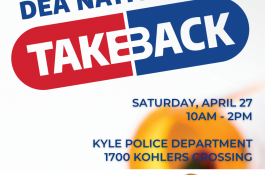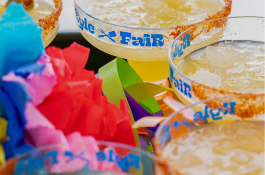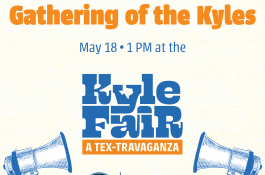Cross-Connection Control Program and Backflow Prevention

Quick Links:
- About City of Kyle Cross-Connection Control Program
- What the City of Kyle’s Cross Connection Control Program is doing to help
- Frequently Asked Questions
- Cross Connection examples and backflow assemblies
- More Information & Resources
About City of Kyle Cross-Connection Control Program:
The City of Kyle’s Cross-Connection Control Program (CCCP) works hard to protect your drinking water from pollution and contamination by ensuring that all cross connections are protected.
A cross connection is any temporary or permanent connection between a public water system or the customer’s potable water system and any source of contamination or pollution.
In our homes and businesses, water is often used to dilute, mix, cool and clean. This water may come in contact with dangerous chemicals and substances. Because of this, laws were enacted to protect drinking water and require that cross connections be protected from backflow.
What the City of Kyle’s Cross Connection Control Program is doing to help:
The CCCP surveys plumbing systems to identify cross connection hazards and determines if the correct backflow assembly is installed and maintained. The City of Kyle will contact you to schedule a survey of your property.
Testing of Backflow Prevention Assemblies
All backflow protection assemblies must be tested upon installation, replacement, repair or relocation. Because backflow prevention assemblies are mechanical devices that will degrade over time, all backflow assemblies should be tested annually to ensure they are in working order.
The City of Kyle has chosen to partner with Vepo, LLC to allow for the online submission of Backflow Prevention Assembly Test and Maintenance Reports. All testing information will be entered directly by the tester into the online password protected Envirotrax® system provided by Vepo, LLC. Testers will no longer be able to submit paper test reports directly to the city.
Finding or Becoming a Registered Tester
All Backflow Prevention Assembly Testers (BPATs) are required to register with Vepo, LLC. Upon registration and verification of license, insurance, and test gauge accuracy, the tester will be added to the approved list of Backflow Prevention Assembly Testers.
Note: Backflow prevention assemblies on fire protection sprinkler systems are required by the State Fire Marshal to be tested and/or repaired by a BPAT who is a full‐time employee of a fire protection sprinkler company that is licensed with the State Fire Marshal's Office.
- Find a BPAT registered to work in the City of Kyle.
- Download a Quick Start Guide with information on how to become a registered BPAT.
We are here to help you obtain the goal of having a safe connection to the City’s water supply. You can contact the Cross Connection Control Program at mmorrison@cityofkyle.com or 737-877-2927.
Frequently Asked Questions:
- Why does City of Kyle need a Cross-Connection Control Program? The program safeguards the public drinking water and protects the health of its customers by ensuring that any contaminants that could backflow into the public water supply system are isolated within the customer’s internal distribution system.
- What is backflow? Backflow refers to the reverse flow of non-potable water, or other substances, through a cross-connection and into the piping of a public water system or customer’s potable water system. Two types of backflows are backpressure backflow and backsiphonage.
- What is the purpose of Customer Service Inspections? To identify if one of two potential sources of contamination exists. One is a cross- connection, an actual or potential connection between a drinking water supply and a possible source of contamination or pollution. The other potential source of contamination is lead in plumbing.
- What is a backflow prevention assembly? A backflow prevention assembly is a means or mechanism to prevent backflow. The basic means for preventing backflow is an air gap, which either eliminates a cross-connection or provides barrier from backflow. The basic mechanism for preventing backflow is a mechanical backflow preventer, which provides a physical barrier to backflow. The principal types of backflow preventers are the reduced-pressure principle assembly, the pressure vacuum breaker assembly and the double check valve assembly.
- Why do backflow prevention assemblies need to be tested? Mechanical backflow prevention assemblies have internal seals, springs, and moving parts that are subject to fouling, wear, or fatigue. Also, mechanical backflow preventers and air gaps can be bypassed. Therefore, all backflow prevention assemblies must be tested periodically to ensure that they are functioning correctly. Mechanical backflow prevention assemblies must be tested with properly calibrated gauge equipment.
- How often does the backflow prevention assembly need to be tested? To ensure the proper operation of a backflow prevention assembly, it must be tested and certified upon installation and at least once a year thereafter by a licensed backflow tester.
- Does a lawn irrigation system require a backflow prevention assembly? Yes. Section 608.17.5, of the International Plumbing Code and Section P2902.5.3 of the International Residential Code (connections to lawn irrigation systems), states that the potable water supply to lawn irrigation systems shall be protected against backflow by a pressure-type vacuum breaker, a double-check valve assembly or a reduced pressure principle backflow preventer – depending on the degree of the site hazard.
- How will a backflow assembly affect my plumbing system? A backflow assembly may create a slight drop in pressure, however, in our area, the water pressure is typically high. So, a slight decrease in pressure should not be a problem. If you have a water heater tank, the installation of a thermal expansion tank will be required. With a backflow assembly installed on a water line coming into a building, expanded water from a water heater cannot return to the potable water supply. It is now a “closed” system. The water in your tank, as it expands from the heat, has nowhere to go. The solution is a thermal expansion tank.
- What is considered a potential hazard? A potential hazard is defined as any possibility of pollutants, contaminants, and system or plumbing hazards. For example, fire protection systems, irrigation systems, chemical plants, refineries, gas stations, restaurants, hospitals, and manufacturers.
- What is backpressure backflow? Backpressure backflow occurs when the downstream side of the piping system is greater than the supply pressure in a public system or customer’s potable water system. Backpressure can result from an increase in downstream pressure, a reduction in the potable water supply pressure or a combination of both. Pumps can create increases in downstream pressure; temperature increases in boilers, etc. Reductions in potable water supply pressure occur whenever the amount of water being used exceeds the amount of water being supplied, such as during waterline flushing, firefighting or breaks in the water mains.
- What is back-siphonage? Back-siphonage is backflow caused by negative pressure (i.e., vacuum, or partial vacuum) in a public water system or customer’s potable water system. The effect is like drinking water through a straw. Back-siphonage can occur when there is a stoppage of water supply due to nearby firefighting, a break in a water main, etc.
- What is a cross-connection? A cross connection is any temporary or permanent connection between a public water system or the customer’s potable water system and any source or system containing non-potable water or other substances.
- How much will it cost to have a backflow assembly installed and tested? Cost can vary depending on the size and location of the assembly and whether the assembly can be tested during regular business hours. The City of Kyle encourages customers to obtain multiple quotes. Installations may be performed by your plumber, but testing must be done by a certified backflow assembly tester that is state certified.
Cross Connection examples and backflow assemblies:
- Private Wells & Ponds – where the private well connection is connected to a service line receiving water from a public water supply. The untreated water could be pumped into the potable water supply which serves the home and the public water system.
- Fire sprinkler Water Lines- where water is stagnant, often has an unpleasant smell and poor water quality that can backflow into the public water supply.
- Lawn Sprinkler Systems – where the stagnant/contaminated water from the sprinkler system could be drawn into the water system.
- Garden Hoses- where they can be submerged into soap buckets, chemical containers, fertilizer spay bottles, window cleaners and swimming pools are a few examples.

Cross Connections can be controlled with the proper installation of the appropriate backflow assemblies and installing of hose bib vacuum breakers (HVB). Below are examples.
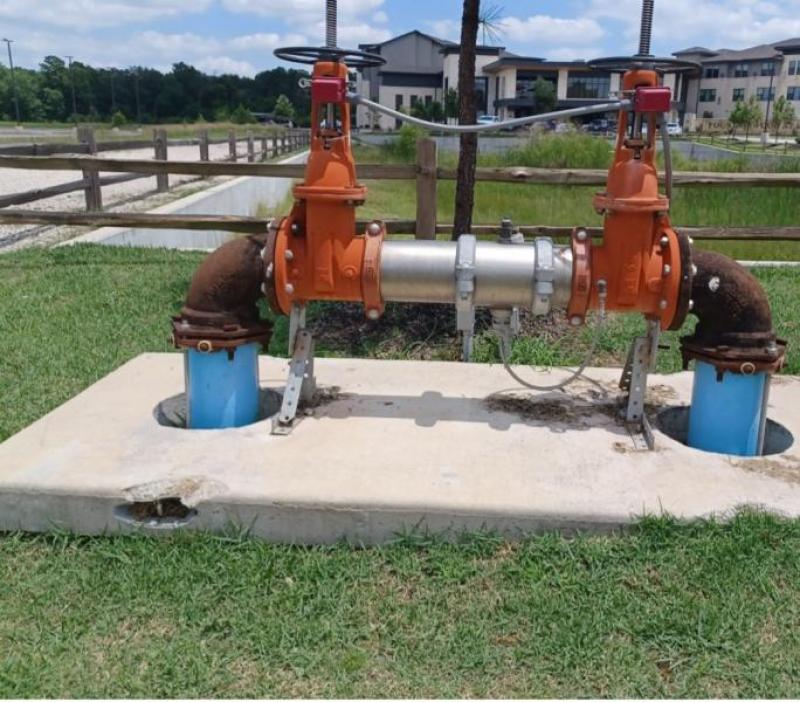
Fire water line backflow assembly (Reduced Pressure) with tamper switches.
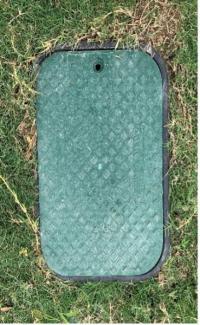
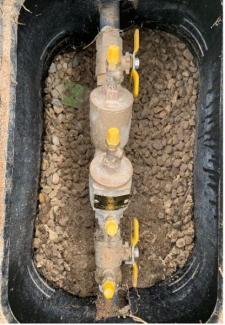
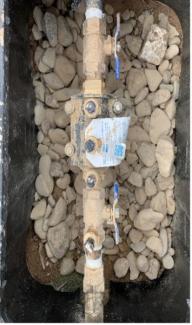
Double Check (DC) backflow assemblies are commonly installed on irrigation systems below ground and in irrigation control valve boxes.
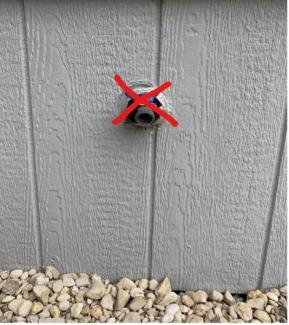
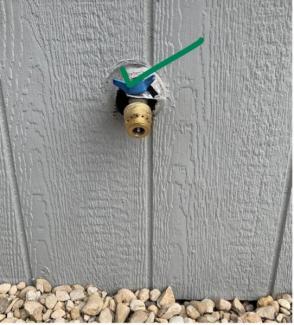
Hose Bib Vacuum Breaker (HVB) are used on outside faucets to prevent contamination from entering homes and businesses.
More Information & Resources
- City of Kyle Backflow Ordinance
- Customer Service Inspector Registration (CSI) - Coming Soon!
- Backflow Tester Registration (BPAT) - Coming Soon!
- Certified Backflow Tester List - Coming Soon!
- Texas Commission on Environmental Quality (TCEQ)
- Safe Drinking Water Act of 1974

